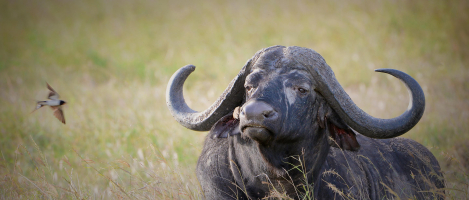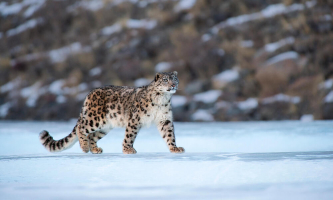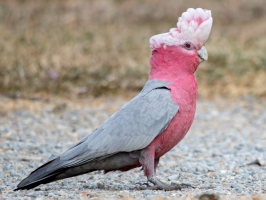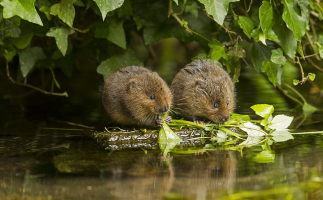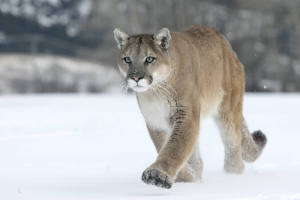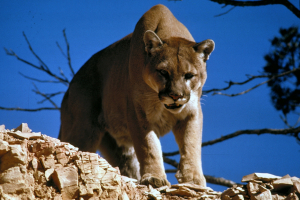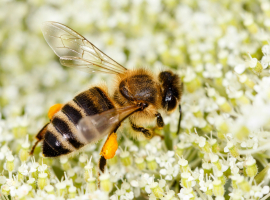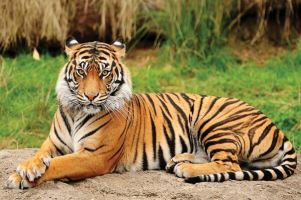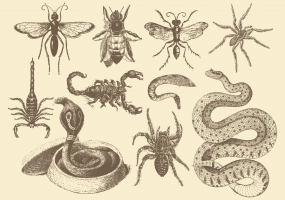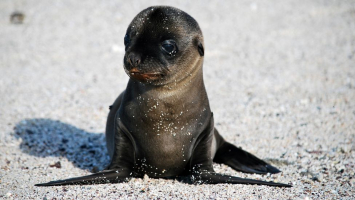Top 10 Most Incredible Animals Only Found In Arctic Region
Extreme weather can be found in the Arctic Circle, one of Earth's polar regions. There aren't many plant and animal species that can survive in this icy, ... read more...windy, and snow-covered area. The animal from the Arctic has likewise adapted to the harsh northern environment. Hibernation during the bitterly cold months, cryptic coloring, and a thick coat enable them survive in the Arctic. Here is a list of the most incredible animals only found in arctic region, let's find out!
-
The frigid tundra of North America is home to the arctic hare. These hares do not hibernate; instead, they have developed a multitude of behavioral and physiological adaptations to withstand the perilous cold. Their shorter ears are the most obvious example of their dense fur and low surface area to volume ratio, which helps them retain body heat. These hares will occasionally create snow caves and congregate for warmth.
Hares are slightly bigger than rabbits, and they often have longer ears and taller hind legs. Arctic hares are swift and may run up to 40 mph, just like other hares and rabbits. They have a bright white coat that serves as good concealment in the region of ice and snow throughout the winter. In spring, the hare's colors change to blue-gray in an approximation to local rocks and vegetation.
Although they occasionally live alone, arctic hares can also be seen in packs of dozens, hundreds, or even thousands of animals. Arctic hare groups don't tend to develop during mating season, unlike many other animals. Animals pair off and mark their territories for mating, albeit a male may choose to have multiple female partners. Every year, in the spring or early summer, females give birth to one litter. Two to eight young hares mature swiftly and resemble their parents by September. The following year, they will be prepared to reproduce.
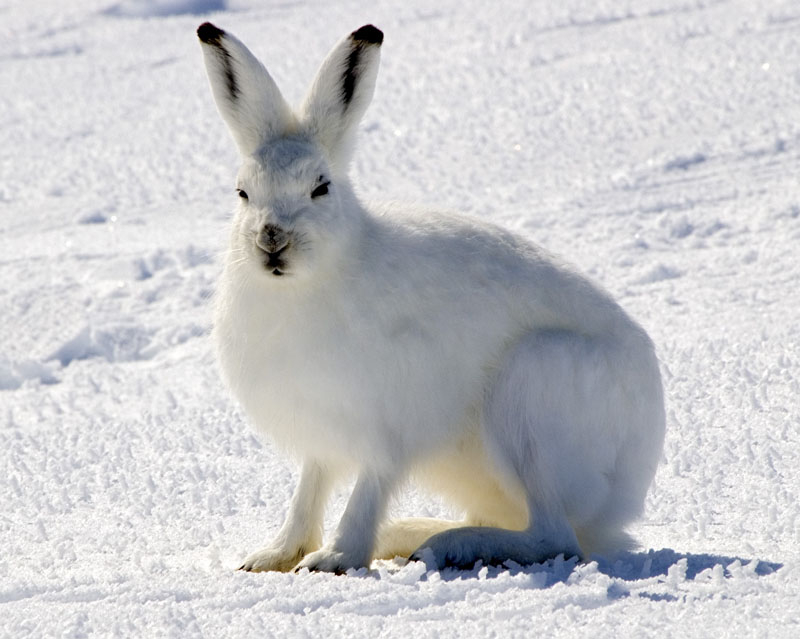
Via: Wikipedia 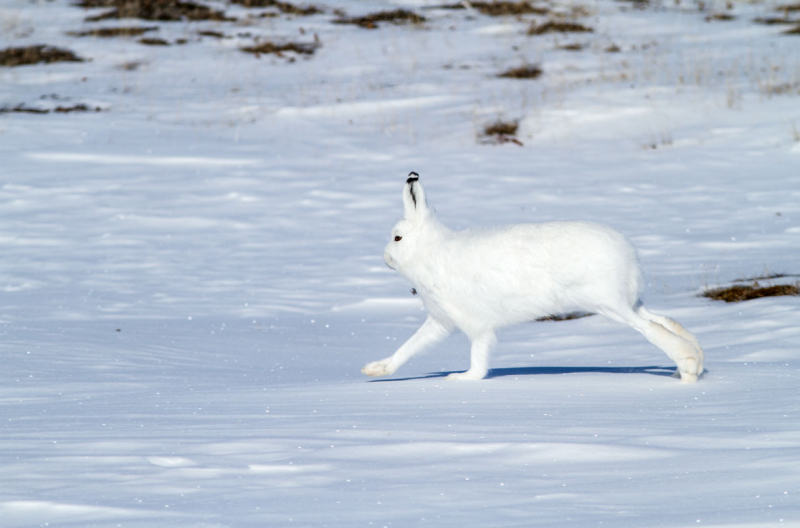
Via: Science -
One of the rare birds that may entice non-birders to go outside and have a look is the majestic snowy owl. In vast, treeless regions known as tundra, these huge owls spend the majority of their time. On the ground or on small poles, snowy owls perch. They wait patiently there while hunting for prey. Lemmings, tiny rodents that resemble mice, are their preferred prey, but they also hunt other small rodents, rabbits, birds, and fish.
Despite having great vision, snowy owls cannot see their prey when it is hidden by snow or a heavy layer of vegetation. The owl uses its other great sense - hearing to catch those prey. Snowy owls typically fly close to the ground when in flight. They fly toward their prey after seeing it and share it with their enormous, sharp talons, or claws, on their feet.
The snowy owl is active throughout the day, especially in the summer, unlike most owls who sleep during the day and hunt at night. They typically are at their busiest during dawn and dusk. Most snowy owl pairs remain together forever. Three to eleven eggs can be laid at once by female snowy owls in a ground nest. Snowy owls typically lay more eggs when food is plentiful than when it is scarce.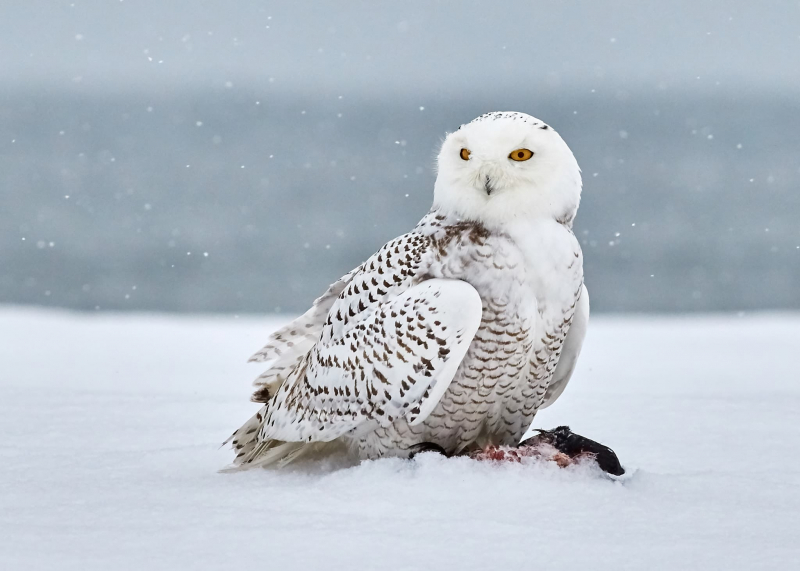
Via: Wikipedia 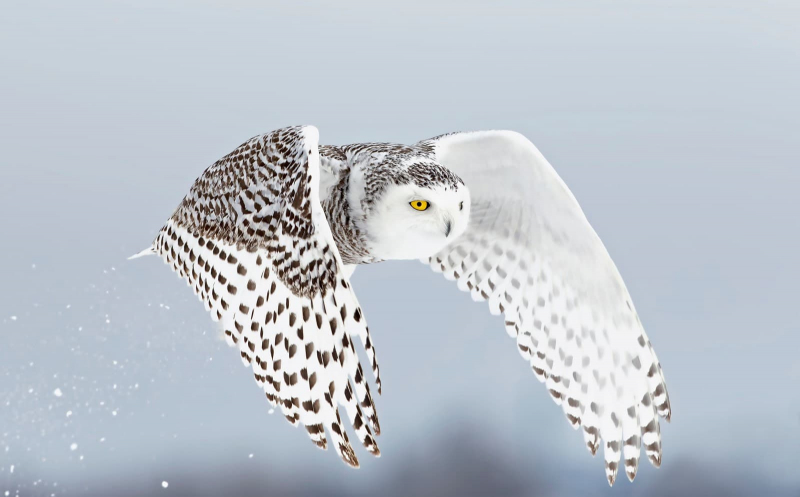
Via: Oceanwide Expeditions -
With their yearly migration from the Arctic Circle to the Antarctic Circle, arctic terns hold the world record for the longest migration of any mammal. One determined tern traveled approximately 60,000 miles - more than twice the diameter of the planet - in one journey. Instead of flying north or south, terns take a circuitous route over continents and oceans to accumulate all those kilometers.
These little seabirds were designed from birth to travel great distances. Arctic terns can float through the air on a breeze thanks to their small, light body, short legs, and narrow wings. They have bright red feet and beaks, and their bodies are coated in gray and white feathers, with a black feather crown perched on each bird's head.
As they go to every ocean and every continent, Arctic terns can be found almost anywhere. They spend many months traveling to the Antarctic Circle each year after breeding on the tundra and coasts of the Arctic and subarctic regions of Europe, Asia, and North America. Colonies are the groups in which Arctic terns migrate.
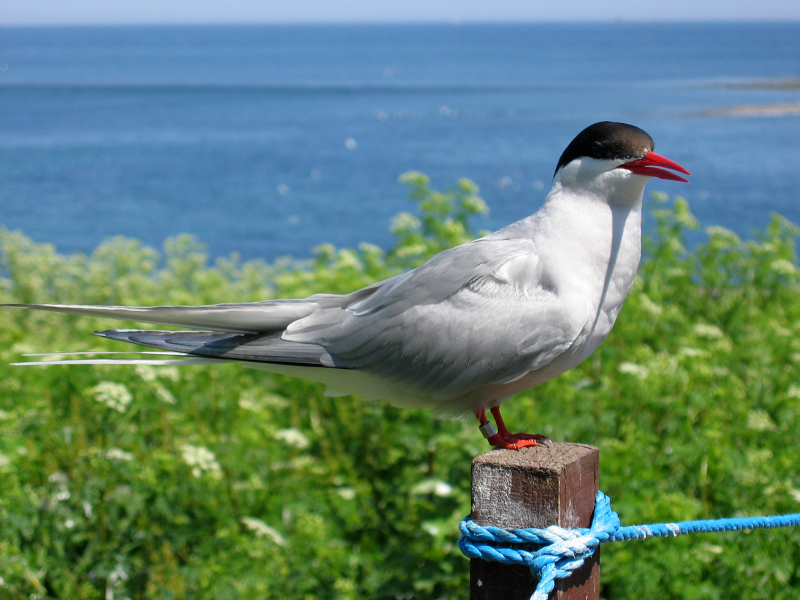
Via: Wikipedia 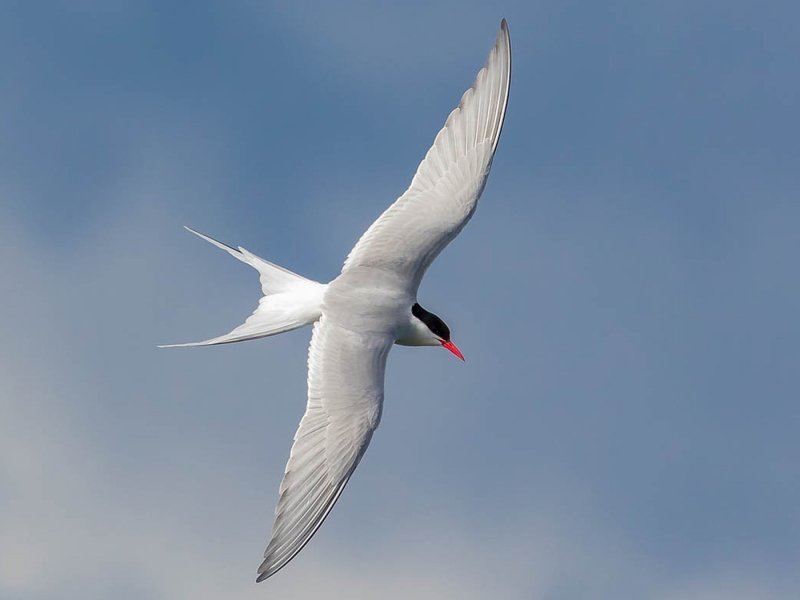
Via: eBird -
In the frigid Arctic, musk oxen explore the tundra in search of the mosses, lichens, and roots that keep them alive. They dig through the snow with their hooves in the winter to graze on these plants. They add Arctic flowers and grasses to their diet during the summer, frequently foraging close to bodies of water.
These animals have lived in the Arctic for many thousands of years, and the cold temperature is a good match for their long, shaggy hair. The guard hairs, which are the outside hairs, conceal a second, shorter undercoat that adds to the winter's insulation. When the weather warms up at the end of winter, this undercoat comes off.
Musk oxen are herd animals, and often a single female would be in charge of groups of two or three dozen animals. To combat canine or wolf predation, herds work together. The "circle the wagons" and line up with their young in the center and their razor-sharp horns pointing outward in the direction of their enemies when they feel threatened. A musk ox that has been cornered can be a terrifying foe, rushing with its enormous size and attempting to utilize its horns in a lethal fashion.
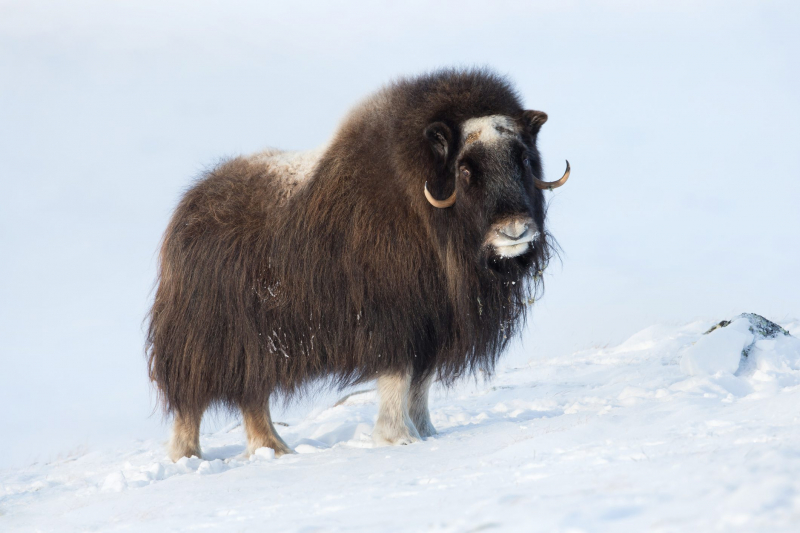
Via: Discover Wildlife 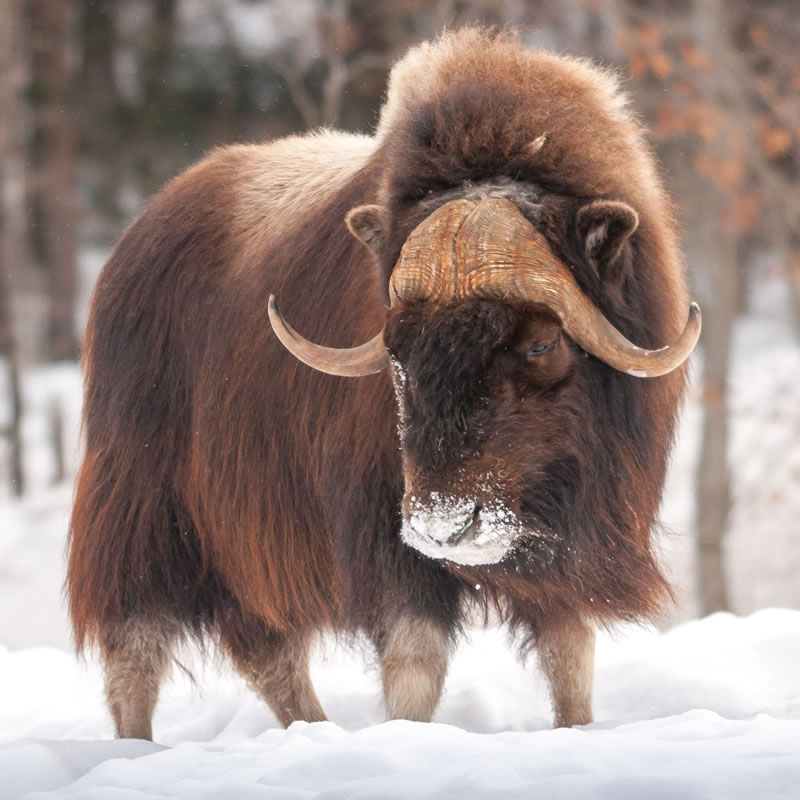
Via: Tundra Animals -
Reindeer, (Rangifer tarandus), in North America, called caribou, are species of deer (family Cervidae) found in the Arctic tundra and adjacent boreal forests of Greenland, Scandinavia, Russia, Alaska, and Canada. In Europe, tamed reindeer exist. Tundra reindeer and forest (or woodland) reindeer are the two sorts of ecotypes. Huge herds of up to 500,000 tundra reindeer move between tundra and forest in a yearly cycle that can span up to 5,000 km (3,000 miles). There are substantially fewer forest reindeer.
Females are slightly smaller than large males, who can weigh more than 250 kilograms (550 pounds) and stand more than 1.2 meters (3.9 feet) tall at the shoulder. Reindeer are adept swimmers and have feet that can extend out on snow or soft ground thanks to their profoundly cloven hooves. From pale in the winter to brown in the summer, color fluctuates. Hollow heavy guard hairs improve the coat's insulating qualities. Only in this type of deer can females also have antlers, which can grow to be up to 44 points long and 1.4 meters long in males.
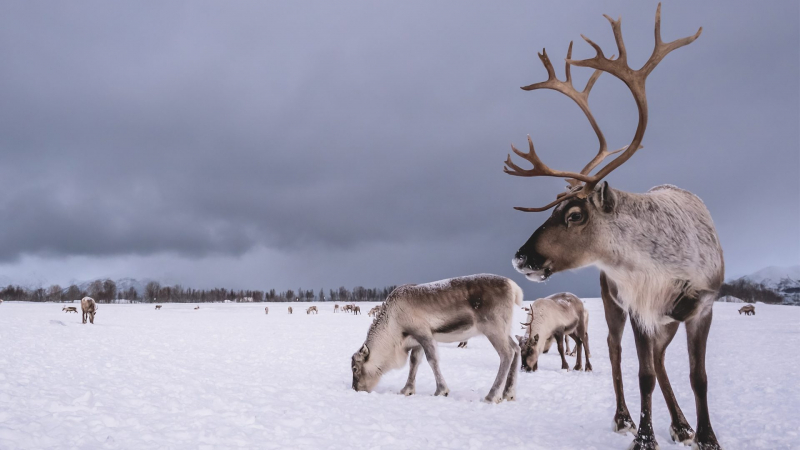
Via: Daily Scandinavian 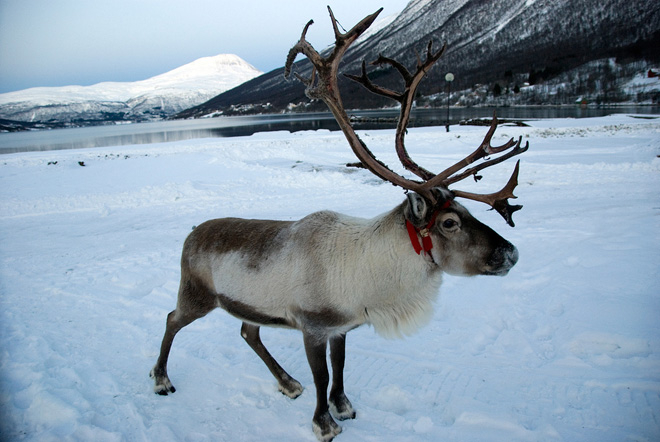
Via: WIRED -
One of the tiniest whale species is the beluga/white whale. They are easily recognized by their unusual color and pronounced foreheads. The beluga, in contrast to most other whales, has a neck that is incredibly flexible, allowing it to nod and tilt its head in any direction. Beluga whales typically coexist in tiny communities known as pods. They are vocal communicators and gregarious animals who use a wide variety of clicks, whistles, and clangs. Other sounds can also be imitated by belugas.
Although they can also be found in subarctic regions, these whales are frequently seen in the coastal seas of the Arctic Ocean. When the sea in the Arctic freezes over, beluga whales travel south in large herds. Fish, crabs, and worms are the main foods for belugas. The whale is linked to the narwhal, a tusked "unicorn" whale. The same-named sturgeon, which has been widely fished for its famed caviar, is not related to the beluga.
Native Arctic populations in Alaska, Canada, Greenland, and Russia engage in commercial and recreational beluga hunting. Due to their predictable migration patterns and the high population density in estuaries and the nearby coastal areas during the summer, belugas have historically been simple prey for hunters.
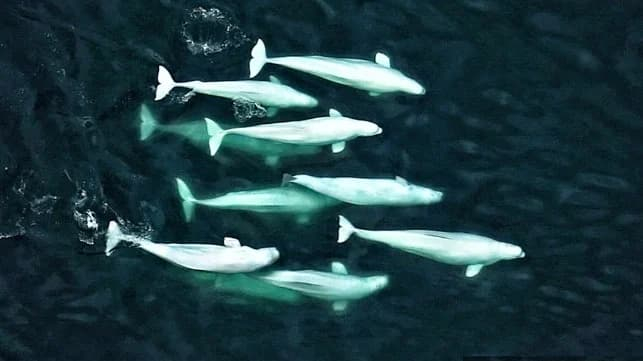
Via: The Maritime Executive 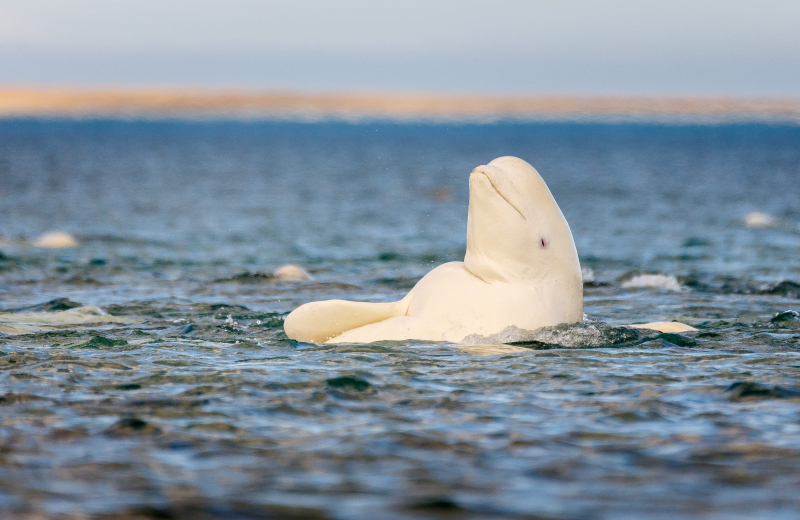
Via: Lonely Planet -
The arctic fox is a very resilient species that can live in the arid, treeless areas of the Arctic where temperatures can drop as low as -58°F. Its tiny nose, short ears, and fuzzy soles are all crucial adaptations to the frigid environment. Arctic foxes dwell in burrows and may dig tunnels into the snow to find shelter during a storm.
The stunning white (or occasionally blue-gray) coats of Arctic foxes serve as excellent winter camouflage. The animal can blend in with the common snow and ice of the tundra thanks to its natural coloring. The fox changes with the seasons, developing a brown or gray coat that offers concealment among the rocks and vegetation of the summer tundra.
Foxes can easily hunt rodents, birds, and even fish because of their pigmentation. But in the winter, there might not be much available prey. When this happens, arctic foxes would pursue the top predator in the area—a polar bear—to consume the carcasses of its prey. When they are accessible, foxes will also consume veggies.
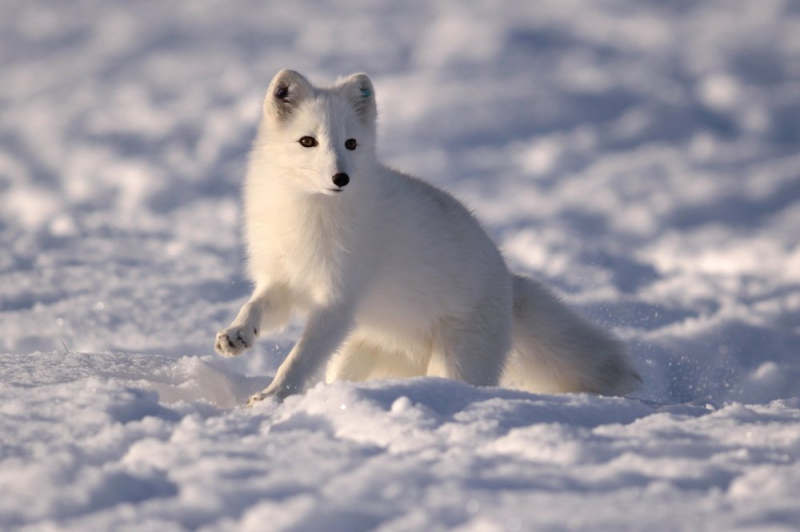
Via: Arctic Today 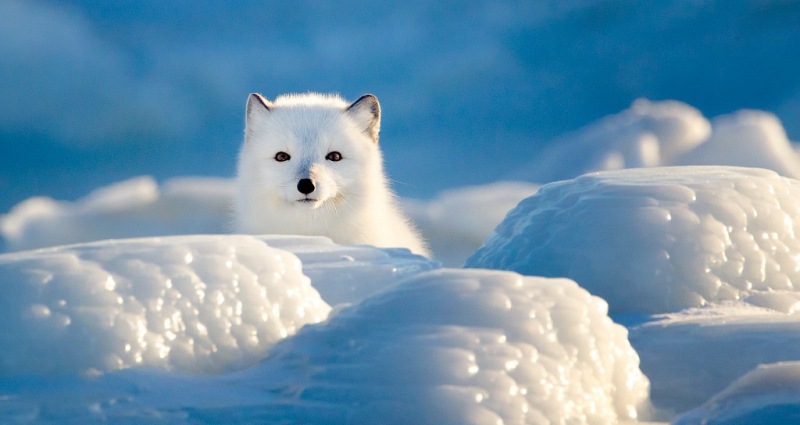
Via: Churchill Wild -
The narwhal, also known as a narwhale (Monodon monoceros), is a medium-sized toothed whale that possesses a large "tusk" from a protruding canine tooth. Narwhals are medium-sized whales, similar to belugas. The overall body size can vary between 3.95 and 5.5 m (13 to 18 ft) for both sexes, excluding the male's tusk. Males are slightly larger than females. An adult narwhal typically weighs between 800 and 1,600 kg (1,760 to 3,530 lb). Males reach sexual maturity around the age of 11 to 13 whereas females do so around the age of 5 to 8. In addition to lacking a dorsal fin, narwhals have jointed neck vertebrae rather than fused ones like dolphins and the majority of whales.
The narwhal is a highly specialized Arctic predator that is mostly found in the Canadian Arctic, Greenlandic waterways, and Russian waters. Under thick pack ice, it consumes primarily flatfish as benthic prey during the winter. Narwhals mostly consume Arctic cod and Greenland halibut throughout the summer, with other species like polar cod making up the rest of their diet. As summer approaches, they go from bays into the ocean every year. The male narwhals periodically make dives in the winter that can last up to 25 minutes and reach a depth of 1,500 m (4,920 ft). Like the majority of toothed whales, narwhals use "clicks", "whistles", and "knocks" to communicate.
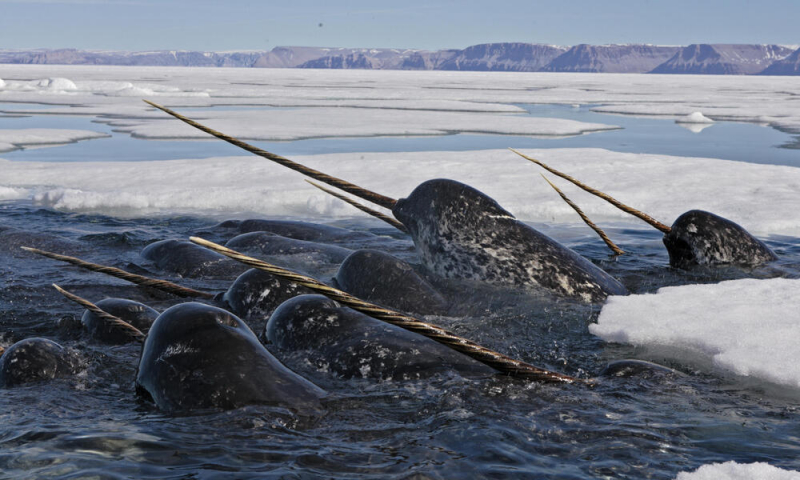
Via: World Wildlife Fund 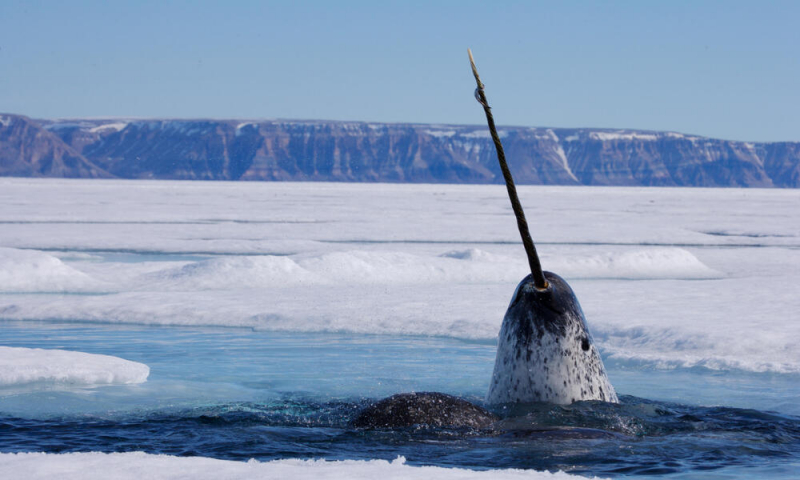
Via: World Wildlife Fund -
Near the Arctic Circle is where you can most frequently spot the long-tusked, mustachioed walrus lounging on the ice with countless others. Although these marine mammals are very social and frequently shout and snort at one another, they become hostile during the mating season. Walruses have wrinkly brown and pink hides and can be identified by their long, white tusks, grizzly whiskers, flat flippers, and blubber-filled bodies.
Walruses use their recognizable long tusks for a variety of purposes, many of which help them live a little bit easier in the Arctic. They utilize them to break breathing holes into the ice from below and to carry their gigantic bodies out of the icy waters, hence the nickname "tooth-walking".
The other distinguishing qualities of the walrus are similarly useful. The extraordinarily sensitive hairs on their faces, known as mystacial vibrissae, are used by walruses as detecting organs because their preferred foods, particularly shellfish, are found close to the dark ocean floor. Walruses are able to slow their heartbeats in order to tolerate the frigid temperatures of the surrounding waters, which is made possible by their blubbery bodies, which allow them to live happily in the Arctic region.
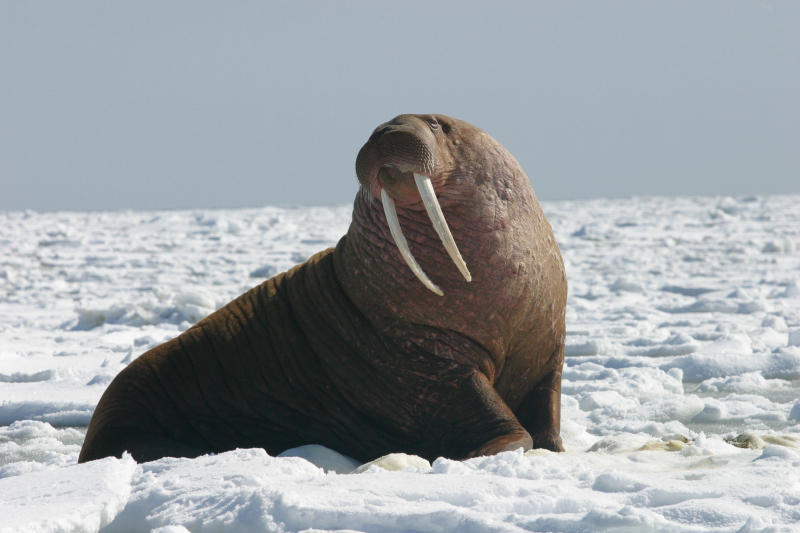
Via: Wikipedia 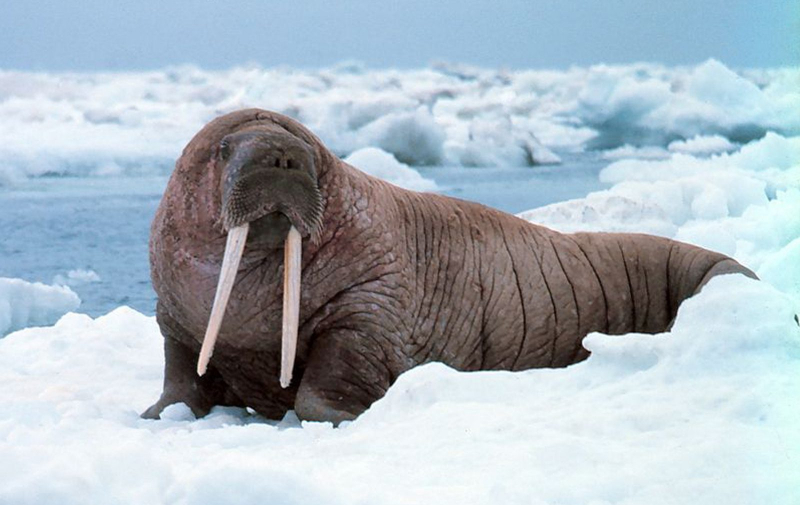
Via: Oceana -
In the bitterly cold Arctic, polar bears live on sea ice and along coastlines. Except for pregnant females, many polar bears venture out onto the sea ice to hunt for seals when sea ice forms over the ocean in cold weather. Mostly, polar bears consume seals. Polar bears frequently spend their idle time at a seal's breathing hole in the ice, watching for a surface appearance of a seal in the water. Additionally, a polar bear may hunt by swimming across the ice. But polar bears are finding it more difficult to hunt due to climate change. In comparison to previous years, ice now melts earlier and forms later. The polar bear would have to scavenge for different, less healthy food without the sea ice.
Polar bears swim in the coastal waters of the Arctic and roam its ice sheets. They have huge, slightly webbed front paws that they use to paddle and are exceptionally good swimmers. Polar bears have been observed swimming hundreds of miles from the coast, but they most likely float on ice sheets for most of the journey.
Polar bears that are pregnant build their dens in the fall, where they will spend the winter and give birth to one to three cubs. In the spring, the mother and her cubs come out of the den together. She will guard them and instruct them in hunting during that period. In order to save polar bears, the United States, Canada, Denmark, Norway, and Russia formed a treaty in 1973.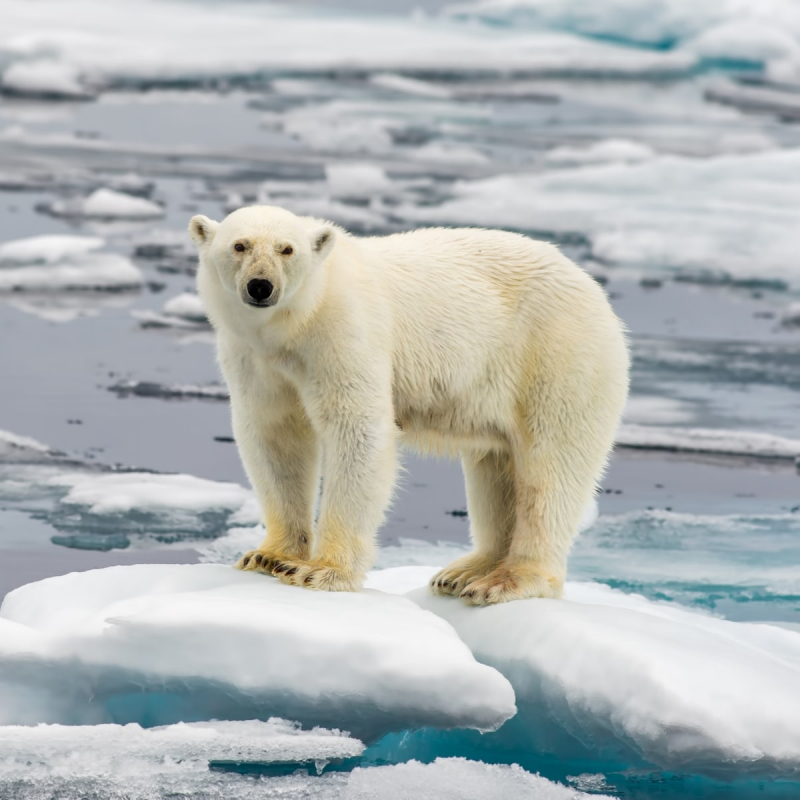
Via: National Today 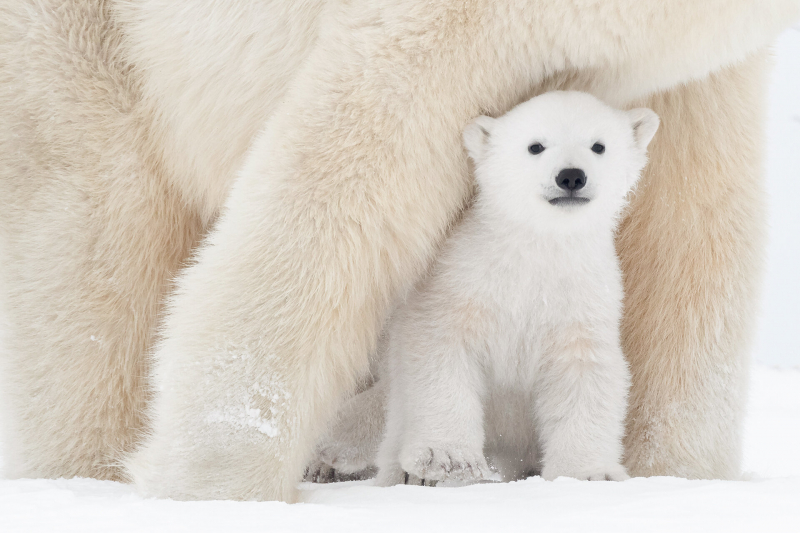
Via: Daisy Gilardini












